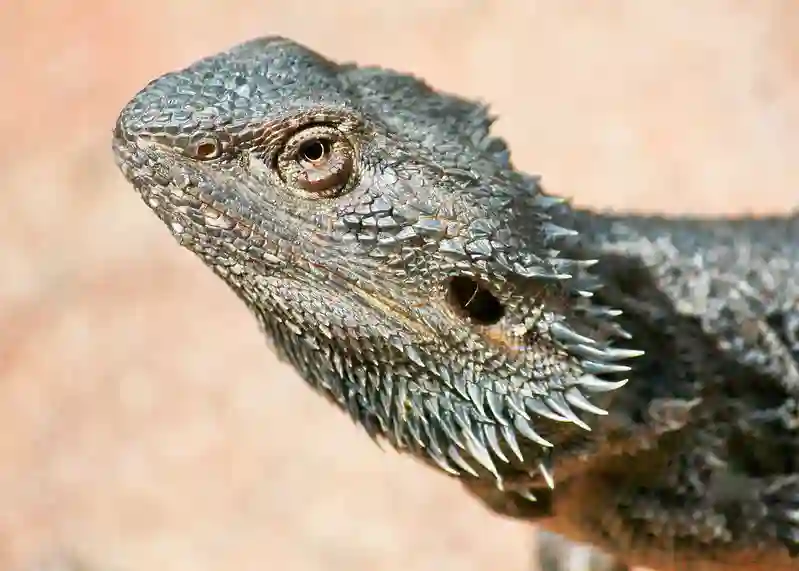Bearded dragons can develop eye infections, which can lead to serious health issues if left untreated. To determine if your bearded dragon has an eye infection, look for the following symptoms:
- Inflammation of the eyelids
- Red eyes
- Swollen or puffy eyes
- Eyes that remain closed or are difficult to open
- Crusted eyes
- Eye discharge
- Excessive tearing
- Cloudy or dull appearance of the eyes
If you notice any of these signs, it is essential to consult a reptile veterinarian for a proper diagnosis and treatment. The vet may prescribe antibiotics, such as ciprofloxacin, or antiviral medications depending on the cause of the infection
Signs and Symptoms of Eye Infections in Bearded Dragons
Bearded dragons can develop eye infections due to various reasons such as infectious diseases, poor husbandry, inappropriate diet, and vitamin A deficiency.
It is important to recognize the symptoms of an eye infection in bearded dragons to take prompt action and prevent it from escalating into a serious health issue. Some of the common signs and symptoms of an eye infection in bearded dragons are:
- Swollen eyes
- Refusal or inability to open eyes
- Eye discharge
- Cloudy or dull appearance of eyes
- Small red or black dots around the eyes
- Crusted eyes
- Droopy eyes
If your bearded dragon is exhibiting any of these symptoms, it is important to take them to a veterinarian as soon as possible for proper diagnosis and treatment.
Causes of Eye Infections in Bearded Dragons
Eye infections in bearded dragons can be caused by a variety of factors, including poor diet, debris, lack of hygiene, parasites, injury, underlying health conditions, and vitamin A deficiency. Identifying the cause of the infection can help prevent the risk of eye infection in the future. Some of the common causes of eye infections in bearded dragons are:
- Vitamin A Deficiency: Bearded dragons are omnivorous, eating insects and leafy greens. They often suffer from vitamin deficiency, which can result in an eye infection.
- Poor Hygiene: Bearded dragons require a clean environment to thrive. Dirty living conditions can lead to bacterial and fungal infections that can affect their eyes.
- Debris: Debris can get into the eyes of bearded dragons and cause irritation and infection.
- Parasites: Parasites, such as mites and ticks, can cause eye infections in bearded dragons.
- Injury: Bearded dragons can injure their eyes in various ways, such as rubbing them against rough surfaces or getting scratches from other pets. These injuries can lead to infections if left untreated.
- Underlying Health Conditions: Bearded dragons with weakened immune systems or underlying health conditions, such as metabolic bone disease or respiratory infections, are more susceptible to eye infections.
If a bearded dragon is showing signs of an eye infection, such as closed eyes, crusted eyes, discharge, or swollen eyes, it is important to take them to a veterinarian as soon as possible for proper treatment and to reduce the risk of serious or permanent damage to the eye.
Prevention and Treatment of Eye Infections in Bearded Dragons
To prevent and treat eye infections in bearded dragons, here are some recommended steps:
Prevention:
- Ensure proper nutrition: Bearded dragons should have a balanced diet that includes a variety of insects and leafy greens. Vitamin A deficiency is a common cause of eye infections, so it’s important to provide adequate nutrition.
- Maintain clean living conditions: Regularly clean the enclosure and remove any waste or debris that could harbor bacteria or irritants.
- Provide proper humidity and temperature: Bearded dragons require specific temperature and humidity levels in their enclosure. Maintaining these conditions can help prevent eye infections.
- Avoid overcrowding: Bearded dragons should have enough space in their enclosure to move around comfortably. Overcrowding can lead to stress and an increased risk of infections.
- Purchase from reputable breeders: Buying bearded dragons from reputable breeders reduces the risk of health problems, including eye infections.
Treatment:
- Consult a veterinarian: If you suspect your bearded dragon has an eye infection, it’s important to seek veterinary care. A qualified veterinarian can perform a thorough examination and determine the underlying cause of the infection.
- Follow prescribed treatment: Your veterinarian will most likely prescribe eye drops or antibiotics to treat the infection. It’s important to follow the prescribed treatment plan and administer the medication as directed.
- Provide warm soaks: While waiting for a vet appointment, you can give your bearded dragon a warm soak to help soothe the eyes and reduce discharge and swelling. Gently wash any crusting or discharge from the eye.
- Correct any dietary or enclosure issues: If the eye infection is due to nutritional deficiencies or inadequate living conditions, make the necessary adjustments to ensure your bearded dragon’s health.
Remember, it’s always best to consult a veterinarian for proper diagnosis and treatment of eye infections in bearded dragons. They can provide personalized advice based on your specific situation
Conclusion
Eye infections are common health issues among bearded dragons; however, they can easily be prevented by providing them with proper care such as regular cleaning and disinfecting their enclosures; offering them a balanced diet with proper nutrition; and avoiding overcrowding with other reptiles in their enclosures.
If you suspect that your pet has an eye infection, it is important to seek veterinary care immediately to ensure that it is treated properly and promptly. Remember, by providing proper care for your bearded dragon, you can help reduce their risk of getting an eye infection while enjoying the company of a healthy pet for years to come.



Leave a Reply